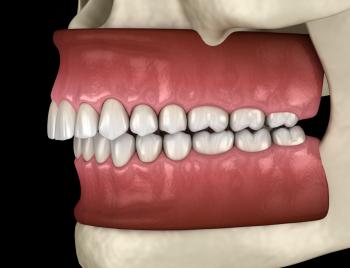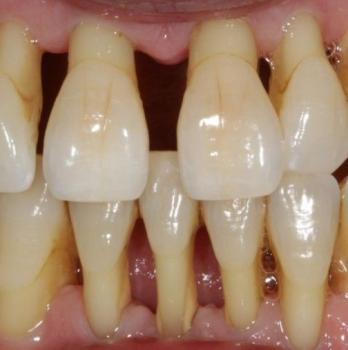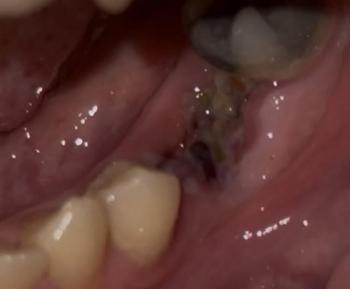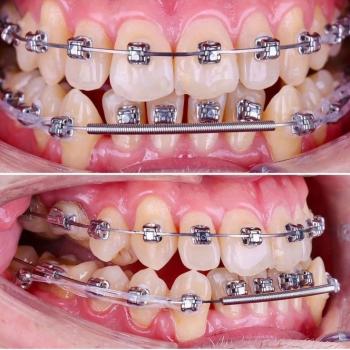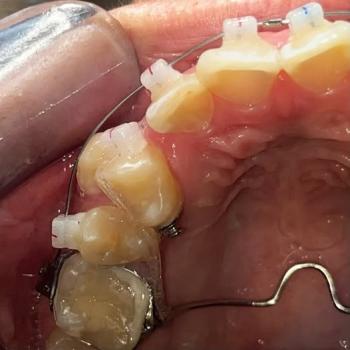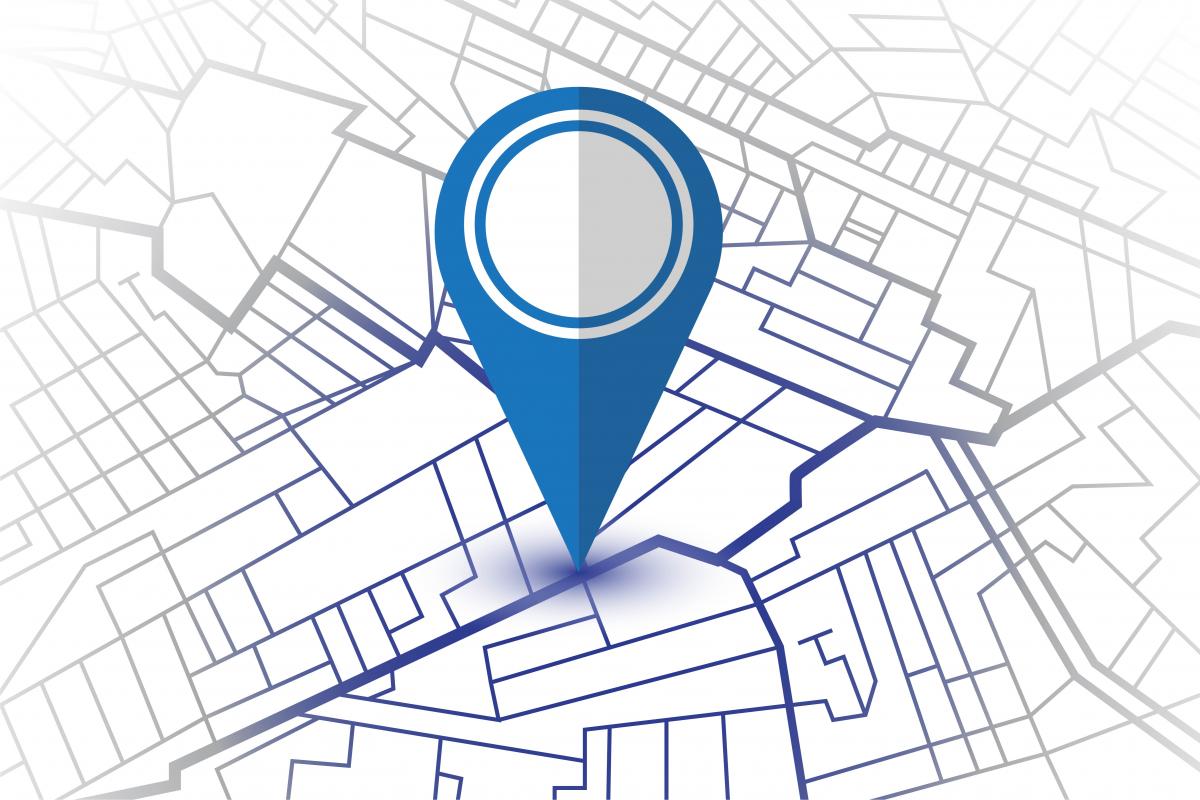Because Every Tooth Deserves Care.
Buccal Nerve Block Explained: How to Numb Mandibular Molars Perfectly
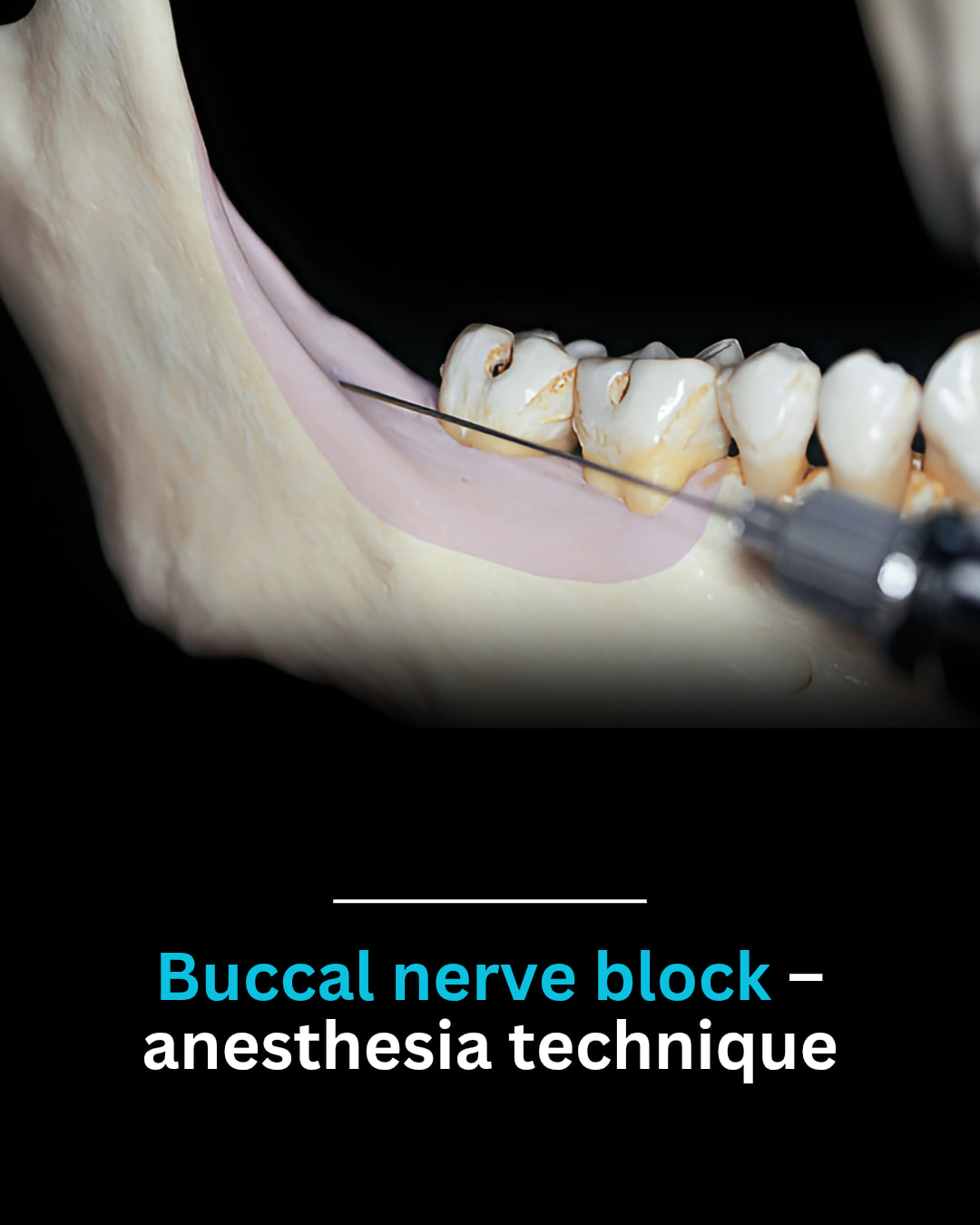
The buccal nerve block is a supplemental anesthetic technique primarily used to numb the buccal soft tissues in the mandibular molar region. While often overshadowed by the more commonly discussed inferior alveolar nerve block (IANB), the buccal nerve block plays a crucial role in ensuring patient comfort during procedures involving soft tissue manipulation near the mandibular molars and retromolar area.
This article explores the anatomy, indications, technique, and critical considerations of the buccal nerve block, offering insights into its clinical significance and potential pitfalls.
Nerve Anesthetized: The Long Buccal Nerve
The long buccal nerve (or simply buccal nerve) arises from the anterior division of the mandibular nerve (V3). Unlike other branches of V3, it is purely sensory, providing innervation to:
-
The buccal gingiva adjacent to the mandibular molars.
-
The mucosa in the posterior mandibular region.
-
The retromolar triangle.
Why Is This Important?
A common misconception is that the IANB alone provides complete anesthesia for mandibular procedures. However, since the IANB does not anesthetize the buccal nerve, a separate buccal nerve block is often necessary for procedures involving soft tissue manipulation.
Areas Anesthetized
The buccal nerve block effectively numbs:
-
Buccal gingiva of mandibular molars.
-
Mucosa overlying the posterior mandible.
-
Periosteum in the injection area.
-
Retromolar pad and triangle—critical for surgical extractions and flap procedures.
Clinical Relevance
Failure to anesthetize this region can lead to patient discomfort during procedures such as:
-
Extractions (especially third molars).
-
Periodontal surgery (gingivectomies, flap elevation).
-
Rubber dam clamp placement in mandibular molars.
Indications vs. Contraindications
When to Use a Buccal Nerve Block?
-
Surgical extractions (mandibular molars).
-
Periodontal procedures involving buccal flaps.
-
Biopsies or soft tissue surgeries in the posterior mandible.
-
Placement of rubber dam clamps to avoid soft tissue sensitivity.
When to Avoid It?
-
Infection or inflammation at the injection site (risk of spreading infection).
-
Patient refusal or allergy to local anesthetics.
-
Unnecessary use when only pulpal anesthesia is needed (since the buccal nerve does not supply the teeth).
Advantages & Disadvantages: A Critical Look
Advantages
-
High success rate (nearly 100% when correctly administered).
-
Minimal discomfort due to superficial injection.
-
Low anesthetic volume required (only ~0.3 mL).
Disadvantages & Potential Pitfalls
-
Often overlooked—clinicians may rely solely on IANB, leading to incomplete anesthesia.
-
Needle insertion discomfort if not performed gently.
-
Requires a separate injection, increasing procedural time.
Technique: Step-by-Step Breakdown
Key Landmarks
-
Mucosa distal and buccal to the last mandibular molar.
-
Anterior border of the mandibular ramus.
-
Occlusal plane of mandibular molars (keeps needle parallel).
Injection Protocol
-
Patient Position: Supine or semi-supine.
-
Operator Position:
-
Right-handed clinicians: 8 o’clock for right side, 10 o’clock for left.
-
Left-handed clinicians: Adjust accordingly.
-
-
Tissue Retraction: Use a mirror or thumb to stretch the buccal mucosa.
-
Needle Selection: 25- or 27-gauge long (same as IANB to minimize needle changes).
-
Insertion Point: Mucosa distal and buccal to the last molar.
-
Depth: Only 2–4 mm (the nerve is superficial).
-
Aspiration: Always confirm no intravascular entry.
-
Anesthetic Volume: 0.3 mL is sufficient.
-
Onset: Usually within 1 minute.
Critical Technical Considerations
-
Avoid deep insertion—can deposit anesthetic into the masseter muscle, reducing efficacy.
-
Slow injection to prevent tissue ballooning.
-
Combine with IANB for complete mandibular anesthesia.
Complications & How to Avoid Them
While rare, potential complications include:
-
Tissue trauma (if needle insertion is too aggressive).
-
Hematoma (if a blood vessel is nicked).
-
Incomplete anesthesia (if injection is too superficial or misplaced).
Prevention Strategies
-
Use a gentle technique.
-
Aspirate before injection.
-
Ensure proper landmark identification.
Conclusion: Why Mastering the Buccal Nerve Block Matters
The buccal nerve block is a simple yet essential technique for achieving complete anesthesia in mandibular posterior procedures. Despite its straightforward nature, overlooking it can lead to patient discomfort and procedural inefficiency.
By understanding its anatomical basis, precise technique, and clinical applications, clinicians can enhance patient comfort and procedural success.
Key Takeaways
-
Always supplement IANB with a buccal block for soft tissue procedures.
-
Keep the injection superficial—the nerve lies just beneath the mucosa.
-
Use minimal anesthetic volume (0.3 mL) for optimal results.
Mastering this technique ensures more predictable anesthesia and improved patient experiences in oral surgery and periodontal treatments.
CEBUANO TRANSLATION
Buccal Nerve Block: Usa ka Kritikal nga Pagsusi sa Teknik ug Klinikal nga Aplikasyon
Ang buccal nerve block usa ka dugang nga anesthetic nga teknik nga gigamit sa pagpahugot sa buccal soft tissues sa dapit sa mandibular molars. Bisan pa nga mas nailhan ang inferior alveolar nerve block (IANB), importante gihapon ang buccal nerve block aron masiguro ang kahupayan sa pasyente ilabina sa mga prosedur nga naglakip sa pag-manipula sa soft tissues sa daplin sa mandibular molars ug sa retromolar nga bahin.
Anatomiya ug Target sa Anesthesia: The Long Buccal Nerve
Ang long buccal nerve gikan sa anterior division sa mandibular nerve (V3). Kini usa ka purely sensory nerve nga naghatag ug feeling sa:
-
Buccal gingiva duol sa mandibular molars
-
Mucosa sa likod nga mandibular nga bahin
-
Retromolar triangle
Ngano Kini Importante?
Usa ka kasagarang sayop ang pagtuo nga ang IANB naghatag og kumpletong anesthesia para sa mandibular procedures. Apan, dili maapil sa IANB ang buccal nerve, mao nga ang buccal nerve block kinahanglan sa mga prosedur nga nagkinahanglan og soft tissue manipulation.
Mga Bahin nga Ma-anesthetize
-
Buccal gingiva sa mandibular molars
-
Mucosa nga nagtabon sa likod nga mandible
-
Periosteum sa dapit sa injection
-
Retromolar pad ug triangle – importante sa surgical extractions ug flap procedures
Klinikal nga Kahinungdanon
Kung dili ma-anesthetize ang buccal area, mahimong mobati og kasakit ang pasyente sa:
-
Extractions (ilabina sa wisdom teeth)
-
Periodontal surgery (flaps, gingivectomy)
-
Pagbutang sa rubber dam clamps
Indikasyon ug Kontraindikasyon
Gamiton Kung:
-
Surgical extraction sa mandibular molars
-
Periodontal nga prosedur nga nag-apil sa buccal flap
-
Biopsy o soft tissue surgery sa likod nga mandible
-
Pagbutang og rubber dam clamp
Likayan Kung:
-
Adunay impeksyon/inflammation sa injection site
-
Dili mosugot ang pasyente o adunay allergy
-
Kung pulpal anesthesia lang ang gikinahanglan (kay ang buccal nerve dili mohatag og pulpal innervation)
Mga Bentaha ug Disbentaha
Mga Bentaha:
-
Halos 100% ang kalampusan kung husto
-
Gamay ra og discomfort kay superficial injection ra
-
Gamay ra ang volume sa anesthetic (~0.3 mL)
Mga Disbentaha:
-
Kasagaran malimtan, nagasalig lang sa IANB
-
Kung dili hinay, makahatag og discomfort
-
Dugang nga injection = dugang nga oras
Teknika: Hakbang-hakbang
Landmarks:
-
Mucosa distal ug buccal sa last mandibular molar
-
Anterior border sa mandibular ramus
-
Occlusal plane sa molars (guidance sa angle)
Protocol:
-
Posisyon sa pasyente: Supine o semi-supine
-
Posisyon sa operator:
-
Right-handed: 8 o’clock (right side), 10 o’clock (left)
-
Left-handed: adjust accordingly
-
-
Retraction: Gamita ang mirror o thumb
-
Needle: 25-27 gauge, long (same as IANB)
-
Insertion: Mucosa distal ug buccal sa last molar
-
Depth: 2–4 mm lang
-
Aspiration: Aron malikayan ang intravascular injection
-
Volume: 0.3 mL
-
Onset: Sulod lang sa 1 minuto
Mga Komplikasyon ug Paglikay
Mga posibleng komplikasyon:
-
Tissue trauma
-
Hematoma
-
Incomplete anesthesia
Prebensyon:
-
Hinay ug malumo nga teknik
-
Siguraduhon ang landmarks
-
Perme mag-aspirate
Konklusyon: Ngano Kinahanglan Masteron ang Buccal Block
Bisan sayon ra, ang buccal nerve block importante kaayo para sa kompleto nga mandibular anesthesia. Ang pagsabot sa anatomical location, husto nga teknik, ug klinikal nga gamit magdala ug mas kahupayan sa pasyente ug kalampusan sa prosedura.
Key Takeaways
-
Perme i-combine ang IANB ug buccal block para sa soft tissue procedures
-
Superficial injection lang – naa ra ang nerve ilawom sa mucosa
-
0.3 mL lang ang anesthetic
-
Mas predictable ang resulta kung master nimo kini nga teknik
Nangita ka og dentista? Bisitaha ang among directory list.
TAGALOG TRANSLATION
Buccal Nerve Block: Isang Kritikal na Pagsusuri sa Teknik at Klinikal na Aplikasyon
Ang buccal nerve block ay isang supplemental na teknik sa anesthesia na pangunahing ginagamit upang manhidin ang buccal soft tissue sa bahagi ng mandibular molars. Bagama’t mas kilala ang inferior alveolar nerve block (IANB), mahalaga rin ang buccal block lalo na sa mga procedures na may kinalaman sa soft tissues sa paligid ng mandibular molars at retromolar area.
Anatomiya at Target na Nerve: The Long Buccal Nerve
Ang long buccal nerve ay nagmumula sa anterior division ng mandibular nerve (V3). Isa itong pure sensory nerve na nagbibigay sensasyon sa:
-
Buccal gingiva malapit sa mandibular molars
-
Mucosa sa posterior mandible
-
Retromolar triangle
Bakit Ito Mahalaga?
Karaniwang akala ng iba na sapat na ang IANB para sa lahat ng mandibular procedures. Ngunit, hindi nito naaabot ang buccal nerve, kaya’t kailangan ng hiwalay na buccal block lalo na sa soft tissue procedures.
Mga Bahaging Namamanhid
-
Buccal gingiva sa mandibular molars
-
Mucosa sa likod ng mandible
-
Periosteum sa injection site
-
Retromolar pad/triangle – kritikal sa surgical extractions
Kahalagahan sa Klinikal
Kapag hindi ito na-anesthetize, maaaring makaranas ng sakit ang pasyente tuwing:
-
Pagtanggal ng ngipin (lalo na third molars)
-
Periodontal surgery (flap, gingivectomy)
-
Pagkabit ng rubber dam clamps
Mga Indikasyon at Kontraindikasyon
Kailan Gamitin:
-
Surgical extractions ng mandibular molars
-
Buccal flap surgeries
-
Soft tissue biopsy sa likod na bahagi
-
Rubber dam placement
Iwasan Kung:
-
May impeksyon o pamamaga sa injection site
-
Tumanggi ang pasyente o may allergy
-
Hindi kailangan kapag pulpal anesthesia lang ang kailangan
Mga Bentahe at Disbentahe
Mga Bentahe:
-
Mataas ang tagumpay (~100%)
-
Konti lang ang discomfort
-
Kaunting anesthetic lang (~0.3 mL)
Mga Disbentahe:
-
Madalas makalimutan
-
Maaaring masakit kung hindi maingat
-
Hiwalay na injection = dagdag oras
Hakbang sa Teknik
Mga Landmark:
-
Mucosa distal at buccal ng huling molar
-
Anterior border ng mandibular ramus
-
Occlusal plane ng molars
Injection Protocol:
-
Pasyente: Supine o semi-supine
-
Dentista:
-
Right-handed: 8 o’clock (kanan), 10 o’clock (kaliwa)
-
Left-handed: adjust base sa dominant hand
-
-
Retraction: Gumamit ng salamin o hinlalaki
-
Karayom: 25-27 gauge, long
-
Punto ng Pagbutas: Distal-buccal ng last molar
-
Lalim: 2–4 mm lang
-
Aspiration: Siguraduhing walang dugo
-
Anesthetic Volume: 0.3 mL
-
Onset: Mga 1 minuto
Komplikasyon at Paano Iwasan
Mga Posibleng Komplikasyon:
-
Tissue trauma
-
Hematoma
-
Hindi sapat ang anesthesia
Paano Iwasan:
-
Gumamit ng banayad na teknik
-
Mag-aspirate bago iturok
-
Tukuyin ng tama ang landmark
Konklusyon: Bakit Mahalaga ang Buccal Nerve Block
Simple ngunit napakahalaga ng buccal nerve block sa mga posterior mandibular procedures. Ang hindi paggamit nito ay maaaring magdulot ng discomfort sa pasyente.
Ang tamang kaalaman sa anatomical landmarks, teknik, at indikasyon ay magpapabuti sa karanasan ng pasyente at tagumpay ng procedure.
Mga Dapat Tandaan
-
Isabay ang buccal block sa IANB kung soft tissue ang procedure
-
Huwag palalimin ang injection – superficial lang ang nerve
-
0.3 mL lang ang sapat
-
Mas tiyak ang anesthesia kung kabisado mo ang teknik
Naghahanap ng dentista? Tingnan ang aming directory list.

